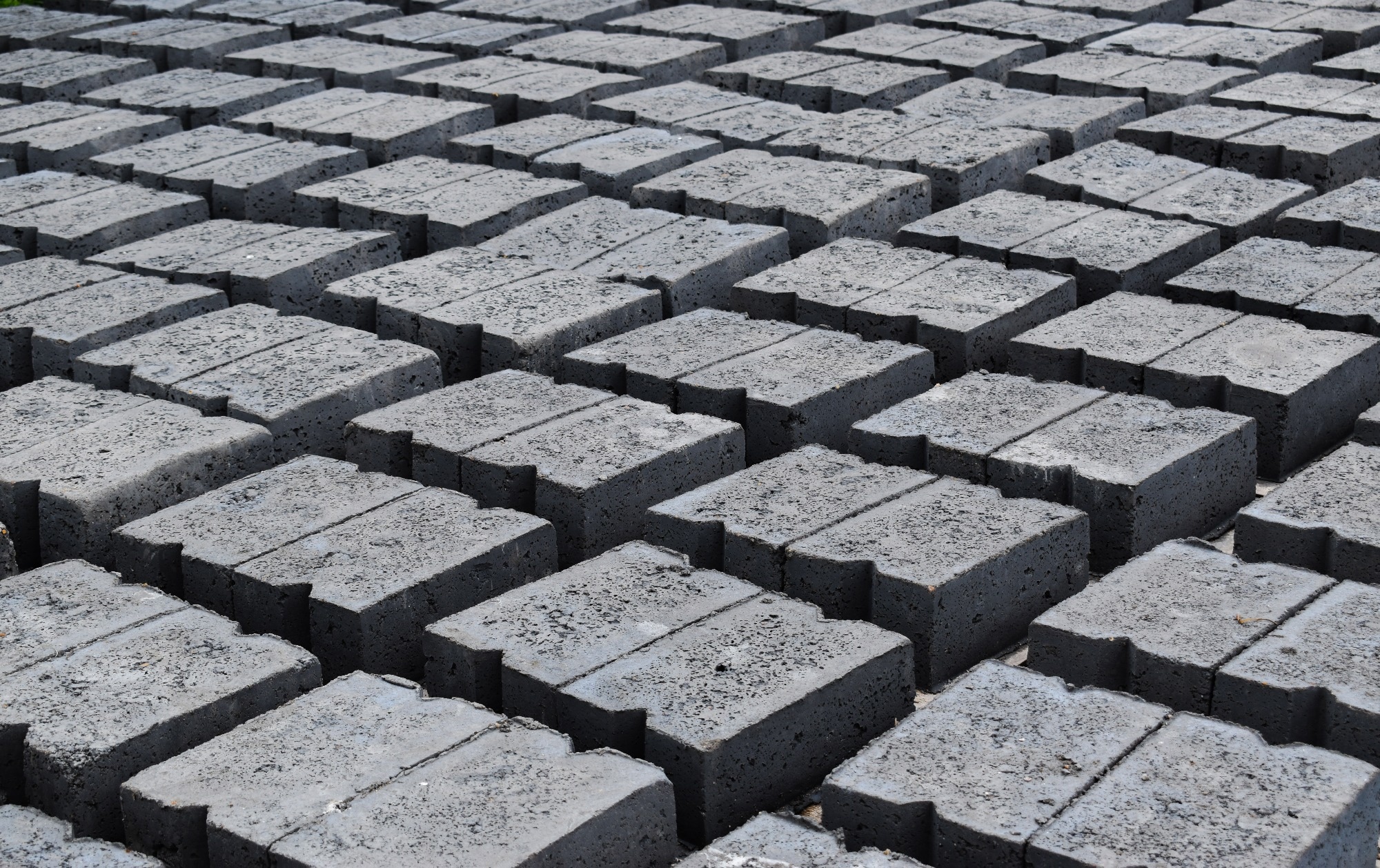In an article recently published in the journal Scientific Reports, researchers evaluated the carbon emission and thermal performance of an 8 ft. × 9 ft. × 8 ft. building constructed with innovative fly ash-based bricks derived from agro-forestry and construction waste.
 Study: Eco-Friendly Building Materials: Fly Ash-Based Bricks. Image Credit: Nishasharma/Shutterstock.com
Study: Eco-Friendly Building Materials: Fly Ash-Based Bricks. Image Credit: Nishasharma/Shutterstock.com
Activated with sodium hydroxide (NaOH), these bricks exhibited significantly lower carbon dioxide (CO2 ) emissions than traditional burnt clay bricks. Replacing just a small percentage of traditional bricks with these fly ash-based alternatives could substantially cut CO2 emissions. Additionally, embodied energy calculations showed that these bricks are more energy-efficient. Their thermal properties also provide adequate insulation, underscoring their role in sustainable and eco-friendly construction.
Background
Previous research has extensively examined the environmental impacts of traditional construction materials like burnt clay bricks and cement, which are major contributors to CO2 emissions and overall environmental degradation. The production of bricks using farm soil reduces agricultural fertility while mining for natural aggregates leads to further soil degradation and pollution.
Additionally, brick kilns emit harmful gases such as CO2, sulfur dioxide (SO2), and nitrogen oxides (NOx), which pose health risks. This issue is particularly acute in northern India, where brick kilns are widespread. Moreover, environmental challenges are exacerbated by the waste from coal-based power plants, construction and demolition activities, and the burning of agricultural residues.
Materials & Methods Overview
The raw materials used in this study comprised alkali-activated fly ash bricks incorporating a blend of locally available agro-waste (rice straw) and forestry waste (dried bamboo leaves, Syzygium cumini, Mangifera indica), ground granulated blast furnace slag (GGBFS) sourced from Tata Steel Sahibabad, India, and construction and demolition (C&D) waste from a local demolition site.
The fly ash used typically contains high ash content (30–40 %) and low calcium content (1–5 %) and is classified as class ‘F’ fly ash. The team cast the bricks using a vibro-compaction technique employing a four-bar slider-crank linkage configuration.
The brick dimensions were 230 mm × 110 mm × 70 mm, with agro-forestry waste comprising 2 wt%, GGBFS 10 wt%, and C&D waste 15–20 wt%. A 3 M sodium hydroxide (NaOH) activator solution and a water-to-binder ratio of 0.4 to 0.5 were used in the brick manufacturing process, which involves steps such as material preparation, casting, and curing. The agro-forestry wastes underwent drying to remove excess moisture and chopping to achieve the desired dimensions.
Cast bricks were cured at ambient temperatures (around 30–32 °C) for 28 days. The prototype building, constructed from these bricks, measured 8 ft. × 9 ft. × 8 ft. and had a single-room layout. The foundation utilized burnt clay bricks for additional strength, while the building incorporated double-glazed glass windows and metallic sheet roofing.
Researchers conducted CO2 emission analysis using a life cycle assessment (LCA) approach, considering various stages of brick production. For burnt clay bricks, the analysis encompassed raw material extraction, transportation, firing, and storage/distribution.
CO2 emissions for agro-forestry waste fly ash bricks were assessed, considering raw material transportation, NaOH production, water pumping, and the transportation of C&D waste, agro-forestry waste, and fine aggregate. An embodied energy calculation was carried out using an LCA approach, accounting for primary energy usage from raw material extraction to final product completion.
Thermal analysis included both steady-state and dynamic properties. Steady-state properties, such as thermal conductivity and thermal transmittance (U-value), were measured according to Indian standards. Dynamic properties, including time lag and decrement factor, were investigated to assess real-time building envelope performance. Active monitoring of temperature variations on inner and outer wall surfaces, as well as ambient and inside room temperatures, occurred over specific periods to evaluate thermal performance.
Fly Ash Bricks: Sustainable Analysis
The study investigated the mechanical properties of bricks made from fly ash, incorporating agroforestry residues and construction waste. The method involved a simple mix of untreated rice straw and dried forestry leaves with fly ash, sand, and construction and demolition (C&D) waste.
Although these bricks showed lower density and compressive strength compared to those made from cement and bottom ash, the overall trend was still favorable. Enhancing the bricks with ground granulated blast furnace slag (GGBFS) improved the compressive strength, a change attributed to the formation of calcium-sodium aluminate silicate hydrate ((Ca–Na)–A–S–H) gel, which promotes rapid hardening at room temperature.
The analysis also examined carbon emissions and embodied energy, revealing substantial environmental advantages of fly ash bricks over traditional burnt clay bricks. By incorporating agroforestry residues and C&D waste, these bricks significantly reduced CO2 emissions, presenting a more sustainable choice.
Additionally, dynamic thermal analysis highlighted the superior thermal insulation and stability of fly ash bricks, demonstrating their suitability for various climatic conditions. Overall, this comprehensive study underscored the potential of fly ash bricks as an environmentally friendly and efficient building material.
Conclusion
In conclusion, the study underscored the viability of utilizing fly ash, C&D waste, and agro-forestry waste as eco-friendly building materials. Fly ash bricks, activated with 3 M NaOH, exhibited satisfactory mechanical strength and superior thermal insulation properties compared to burnt clay bricks. Furthermore, the analysis revealed a substantial reduction in CO2 emissions and embodied energy, highlighting the potential of these materials to mitigate environmental impact while promoting energy efficiency and thermal comfort in buildings.
Journal Reference
Singh, S., et al. (2024). Large CO2 reduction and enhanced thermal performance of agro-forestry, construction, and demolition waste-based fly ash bricks for sustainable construction. Scientific Reports, 14:1, 8368. https://doi.org/10.1038/s41598-024-59012-8, https://www.nature.com/articles/s41598-024-59012-8
Disclaimer: The views expressed here are those of the author expressed in their private capacity and do not necessarily represent the views of AZoM.com Limited T/A AZoNetwork the owner and operator of this website. This disclaimer forms part of the Terms and conditions of use of this website.